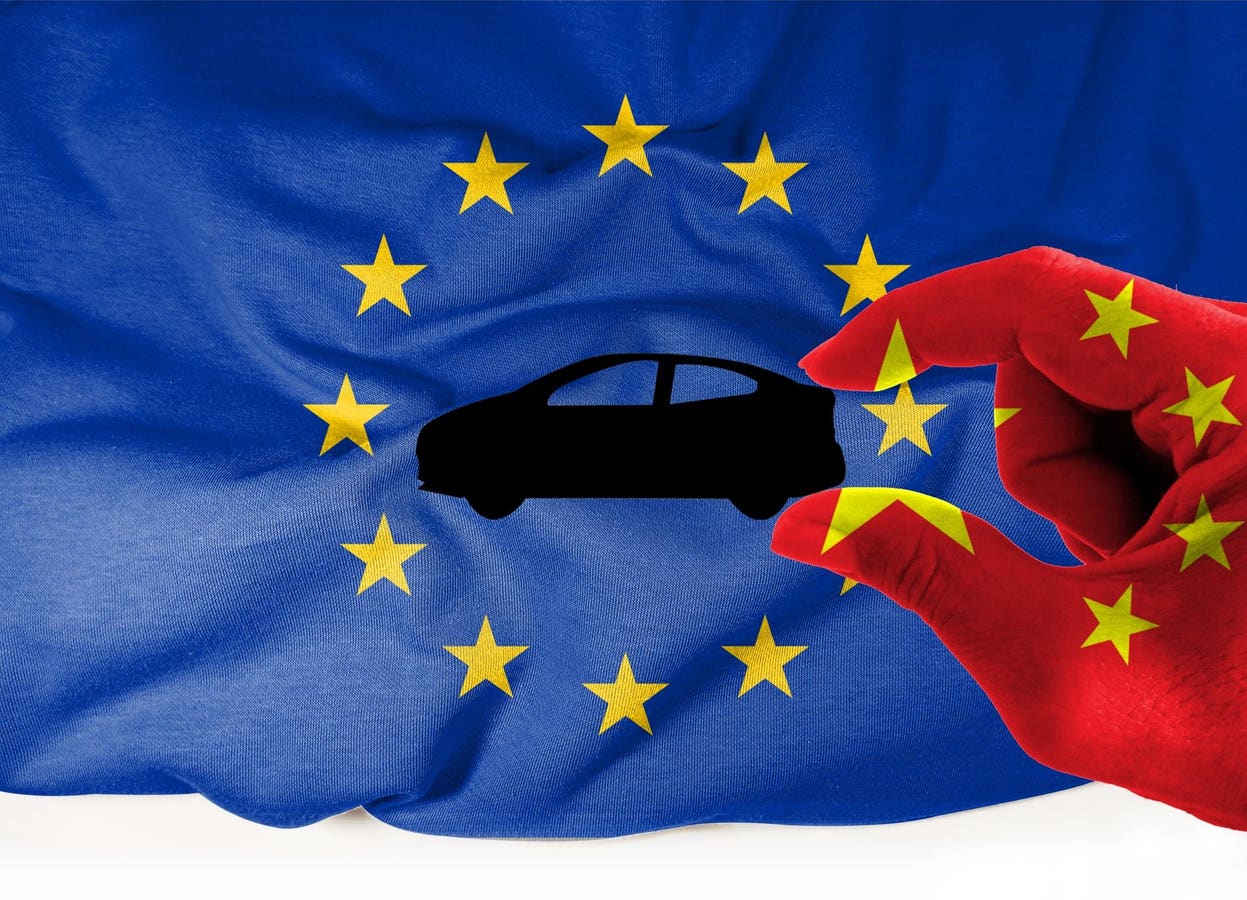Concept map depicting dialogue between China and the European Union.
The European Union’s plan for a new electric vehicle monopoly by 2035 will falter as sales disappoint and China’s EV push gains momentum. Brussels faces an uncomfortable choice: water down its green transition, or risk the health of its flagship auto industry.
The EU is being urged to dilute its plan that new EVs will be the only game in town by 2035 by widening the possibilities with hybrids and e-fuels. Green groups are adamant EVs should be the only option.
Industry experts say EU regulations to curb CO2 emissions in the name of saving the planet are having unfortunate side effects. They are exposing Europe’s carmakers to an existential threat from China not only in home markets but in global markets too. Leading mass carmakers like Stellantis and Volkswagen are being forced to close factories. Their global markets are being undermined as well. Even the likes of Germany’s BMW, Mercedes and Audi are being exposed in the electrification stakes.
The EU has raised tariffs on electric cars from China by an extra 17% to 35.3%, on top of the existing 10% car import duty. But this hasn’t slowed China’s business much because of its huge lead in efficiency. Chinese manufacturers have also switched their focus to plug-in hybrids which don’t carry the extra tariff.
The EU is between a rock and a hard place. Save the auto industry and millions of jobs by watering down the CO2 regulations and be accused of climate change denial. Or maintain the hard line, please environmental lobby groups, and weaken the industry. Politics will decide on this issue, which has become a left/right controversy. The left has traditionally been on the side of climate change absolutists. The right has been more willing to compromise. Recent elections for the EU, and the member states, have shown a move to the right, but it’s not yet clear if this will herald a change of policy.
Death sentence?
In mid-2021 when the EU drew up its plan to phase out the sale of new combustion engine vehicles by 2035 in favour of EVs, it didn’t look like a death sentence for its auto industry.
But now some believe it does. China is geared up to flood the global market with EVs, hybrids and plug-in hybrids. Not to mention conventional ICE products. It is said to have at least a 30% efficiency advantage. “China speed” has become a cliché in the industry, referring to its ability to design and build state-of-the-art sedans and SUVs about twice as quickly as traditional automakers.
“What we have right now in Europe is regulation that might have been designed to benefit the Chinese carmakers. They are prepared. They are ahead of the Europeans,” said Felipe Munoz, global automotive analyst at JATO Dynamics.
“It needs to change,” Munoz said in an email exchange.
“Politicians are not seeing what’s going on in the factories and the market-place. They are not aligned with reality,” he said.
BYD Dolphin Surf electric vehicle at the model launch event in Paris. Photographer: Cyril … More
Munoz said it’s not only the Chinese impact in Europe that is dangerous, it’s the impact in regions where European automakers have been very strong and profitable. Here the Chinese are making big progress.
The EU has decreed that automakers raise their EV market share in 2025 to 28% and ratchet up to about 80% by 2030 and 100% by 2035. The trouble is auto buyers aren’t cooperating. Sales forecasts by consultants and investment banks for 2030 point to about half of the 80%. Investment bank UBS recently slashed almost two million EVs from its sales forecast for Europe in 2030. That now stands at 6.4 million or 37.8%. Other forecasts include BMI, a part of Fitch Solutions, 35%, French automotive consultancy Inovev 40%, and investment researcher Jefferies 35%.
Survey shows European EV reluctance
And according to a survey published by oil giant Shell, drivers in Europe are becoming more reluctant to switch to electric vehicles from combustion engines. The survey of 15,000 drivers across the world showed that 41% of respondents in Europe would consider switching to an electric car compared with 48% last year. The main negatives were the cost of vehicles, and high prices for public charging. Shell operates 75,000 charging stations in Europe, the U.S. and China.
The European Automobile Manufacturers Association said in a statement that it has voiced concerns about how the transition to climate neutrality has not progressed as expected, as the market uptake of battery-electric models has been slower than anticipated.
“However, to stay on course we urgently need a holistic approach to ensure that the industry remains competitive and resilient whilst investing in emission reduction technologies. This includes:
- Substantial investment in charging and hydrogen refilling infrastructure
- Meaningful purchase and tax incentives for consumers
- Fairer energy pricing
- A coherent industrial strategy that maintains Europe’s competitive edge
Brussels-based Transport & Environment is adamant that no concessions should be made to those seeking to dilute the rules, not only on environmental grounds, but says any mitigation will also make it more difficult for European carmakers to repel the Chinese threat.
“Weakening the 2030 CO2 target or reversing the 2035 decision is also a misguided global industrial policy. It would allow European carmakers to take their foot off the gas and delay investment in mass-market EV models they need to compete globally,” T&E’s Julia Poliscanova said.
Stand firm on 2035 rules
“The world’s politics are certainly bumpy, but electrification is accelerating regardless. If Europe wants battery investment, affordable EV models and a competitive auto industry globally, it starts with standing firm on the 2035 zero-emissions mandate,” Poliscanova said.
Poliscanova was rebutting a plea by the German automaker’s association, VDA, that wants to weaken the 2035 ICE deadline by exempting plug-in hybrids and low-carbon gasoline. The EU has already weakened the rules for 2025 by allowing manufacturers to average out their CO2 emissions over an extra two years.
Nissan Sakura Kei car. European manufacturers want the EU to change its rules to allow profitable … More
Last week Stellantis chairman John Elkann called on the EU to change its rules to allow automakers to return to building entry-level small cars, along the lines of Japan’s so called “Kei” cars. As part of the 2035 CO2 emissions agreement manufacturers were given concessions which allowed them to make extremely heavy and profitable SUVs and sedans. But the EU also included regulations virtually outlawing the sale of little gasoline-powered vehicles like the Fiat 500 which became impossibly expensive.
JATO’s Munoz also wants the regulations widened.
“We need to change the whole approach and consider other ways. By all means keep the goals but allow other solutions as well. So far it’s been limited to electric vehicles but anything that lowers CO2 emissions should be welcome. The brand that has made the most progress in Europe in cutting CO2 emissions is Toyota with its hybrids, but it doesn’t sell many electric vehicles. You can reduce emissions not only by selling EVs but hybrids too,” Munoz said.
The EU Commission will later this year review the whole mandate for 2035, including the possibility of “full technology neutrality” as a core principle. That would mean withdrawing from the notion that politicians could pick winning technologies and generate automaker euphoria and green anger.









